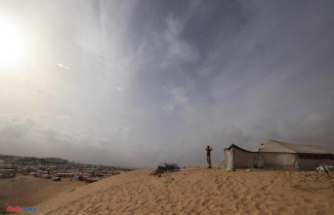The latest smartphone generation is advertised as waterproof by many manufacturers. However, this often only means that a light rain shower cannot harm the cell phones. However, if the phone falls into the water, most models suffer massive damage that can no longer be repaired. However, if you don't want to leave your smartphone at home when you want to go to the beach or the pool, go on a kayak tour or use the Stand Up Paddle, you should use a waterproof cell phone case. But here too there are a few important points to consider.
You can tell whether a hand sleeve really does not let moisture (or dirt and sand) through by looking at the IPX number. But what does it actually stand for and which value should one use as a guide in order to be on the safe side – even under water? The abbreviation "IP" stands for "International Protection", i.e. an international protection class. It is divided into the following categories:
IPX Code:
moisture protection:
IPX0
no protection against water drops
IPX1
Protection against (vertically) falling water drops
IPX2
Protection against water droplets falling at an angle (when the housing is tilted up to 15°)
IPX3
Protection against falling spray water (angle < 60°)
IPX4
Protection against splashing water
IPX5
Protection against water jets (from all directions)
IPX6
Protection against strong water jets
IPX7
Protection against short, temporary immersion under water
IPX8
Protection against submersion indefinitely (waterproof)
IPX9
Protection against water from high-pressure/steam jet cleaners
As you can see, there are a number of different protection classes – including for mobile phone cases. So that it is waterproof in any case, it should definitely have an IPX8 certification. Because models with a lower number are unfortunately only partially waterproof and therefore not useful on vacation (at least near the beach and pool).
In fact, it is not enough to "only" pay attention to the IPX protection class when buying a waterproof cell phone case. There are other features to consider, such as:
The size Not every waterproof phone case is large enough to fit your smartphone. Therefore, the display size plays a decisive role when purchasing: So always pay attention to the information provided by the manufacturer - the internal dimensions in particular are important to know. Depending on the provider, there is also a note on the packaging for which phone the case is suitable. This IPX8 variant is recommended for the following models, for example: iPhone SE2/11 Pro Max/XS Max/11/XR and Samsung Galaxy S10/S9/S8.
The Material Most cell phone cases are made of multi-layer plastic (PVC, ABS or TPU), some are also made of silicone. However, it is not important which material was used, but how sensitive it is - after all, you should be able to use your smartphone when it is in the case. It is therefore advisable to make sure when buying whether the display can be used. Most manufacturers provide information about whether their product is compatible with 3D Touch, Touch ID and Force Touch glass, for example.
The closure To ensure that a mobile phone case does not let moisture in, not only the material has to be waterproof, but also the seams - and the closure: You can recognize suitable variants by the double or triple closure, for example. Alternatively, a zipper is also suitable. In any case, it is always advisable to make sure that the waterproof cell phone case has a secure closure before you buy it. Otherwise there is a high probability that your smartphone will still get wet.
Even waterproof cell phone cases can only withstand a certain depth of water. So if you want to take your smartphone with you on a dive on holiday, you should find out in advance what depth of water your case is designed for. Some are only designed for ten meters, while others can even dive 30 meters deep - without being damaged. However, since not every smartphone can easily withstand the water pressure, you also have to make sure that your phone is suitable for diving.
This article contains so-called affiliate links. There is more information here.












